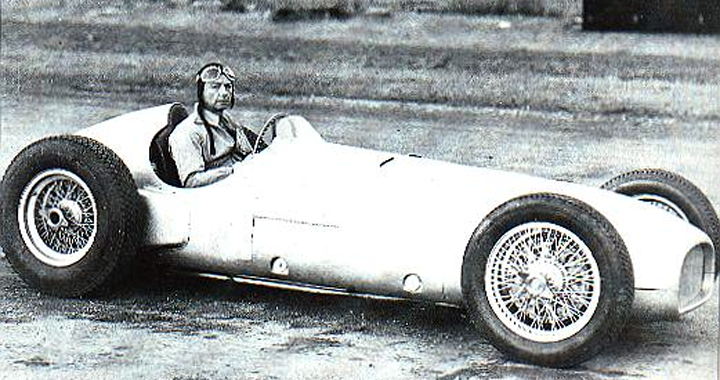Nicknamed “The Ringmeister” for his success in rainy conditions especially at Nurburgring. Caracciola’s legend grew from his very first race, the 1926 German Grand Prix (Grosser Preis Von Deutschland) at the Avus circuit, in Berlin. Caracciola, at the time a 25 year-old weekend racer and salesman for Daimler-Benz, won the event in a factory sports car he borrowed for the weekend. He made history in 1931 after becoming the first non-italian driver to win the famous Mille Miglia.
Category Archives: MEMOIRS
G. P. COPPA CITTA DI BERGAMO 1935
Por Emilio J. Lezcano carsNtravel.com
Bérgamo, fue la sede de los campeones italianos de autos de carrera el 19 de mayo de 1935 durante la celebración del G. P. Coppa Citta Di Bérgamo. El evento se celebró en el ‘Circuito delle Mura’, a través de elegantes calles y los muros venecianos medievales de la ciudad que el campeón italiano Tazio Giorgio Nuvoari lo definió como el “Circuito Sublime”.
Zandvoort – Dutch Grand Prix
In the dunes just north of the town of Zandvoort, Netherlands is a motorsport race track. This track is located in Burgemeester van Alphenstraat near the north coastline.
Avus, Germany
The initials AVUS stands for “Automobil Verkkehrs and Ubungs-Strasse” and was conceived in 1907 by the Automobiliklub von Deutschland (AvD) as a test track for the motor industry and for the sports. The money ran out and the First World War cause further delays although Russian prisioners were employed used to do the building work.
Eliska Junkova
Alzbeta Pospisilova, Eliska Junkova, Elizabeth Junek, or Eliska, as she like to be called, was the greates female driver in motor racing history, and the most famous Czech driver to tackle the Grand Prix circuit of Europa. She was born November 16, 1900 in the town of Olomoutc, the Hana region of Moravia, which was a province of the Austro-Hungarian empire.
B.R.M.
British Racing Motors (BRM) was founded after the Second World War by the race car driver Raymond Mays who started his careers building road racing and hill climb racing cars for English Racing Automobiles (ERA).
Budapest, Hungary
On the 21th of June 1936, Budapest hosted its first international Grand Prix event at the Nepliget 3.1 miles (5km) long circuit which was won by the great Tazio Nuvolari with an Alfa Romeo 3.8 V-8 ahead of Bernd Rosemeyer, Achille Varzi, Manfred von Brauchitsch, Hans von Stuck and Rudolf Caracciola.
Dan Gurney
Daniel Sexton Gurney, was born April 13, 1931, in Port Jefferson, Long Island, to John Gurney, a Metropolitan Opera star and his wife Roma Sexton. As the grandson of F.W. Gurney, manufacturing magnate and inventor of the Gurney ball bearing, it made perfect sense.
Bentley
Walter Owen Bentley, (MBE) was an English engineer; designer of aero engines; designer and racer of motor cars and founder of Bentley Motors Limited in Cricklewood near London.
Brno-Masaryk, Czch
The Czechoslovakian Grand Prix was first held on September 28, 1930 at the Masaryk circuit (Masarykuv okruh) in the town of Brno in Czechoslovakia (now Czech Republic).
Carel Godin de Beaufort
He was his own man. Running his own ‘Ecurie’ against the better prepared teams efforts, he managed to upset the establishment on many occasions. The happy and popular Dutch aristocrat Carel Godin de Beaufort (Maarsbergen, April 10, 1934 – Cologne, August 2, 1964) was the quintessential privateer of the late fifties and early sixties. His orange Porsche housed a free spirit, at unease with the pomp and circumstance of a racing world trying to come to grips with a growing level of professionalism.
Auto Union
Coming soon
Berne, Swiss
The “I Grober Preis Der Schweiz” (The first Swiss Grand Prix) was held at Bremgarten circuit near Berne, Aug. 22, 1934. The enthusiasm in the city of Berne was great and the organizers succeeded in making the Grand Prix race to an instant classic. The Comminges Grand Prix was run in France the same day so some teams like Ferrari split their effort and started in both races.
Aston Martin
Coming soon
Belgrade, Yugoslavia
The Belgrade Grand Prix took place in 3 September 1939. Only one champhionship event was held and won by Tazio Nuvolari. The Belgrade G. P. was held on a bumpyand slippery street track, with cobblestones and tram lines as extra hazard.
Bernd Rosemeyer
Bernd Rosemeyer was born October 14, 1909 in Lingen, Lower Saxony, Germany. Like many other drivers of the period, he began riding motorcycles. He caught to the attention of the DKW factory who had recently joined a group of other manufactures to form the Auto Union group. A revolutionary new Grand Prix car was being built at the Horch factory, at Zwickau, under the direction of Dr. Ferdinand Porsche. The car featured a 6 cylinder engine.
Arnolt-Bristol
Stanley H. “Wacky” Arnolt was a Chicago industrialist, who began importing cars in the 1950′. Though sold as American cars, they were true hybrids, with British mechanicals and Italian bodywork.


















